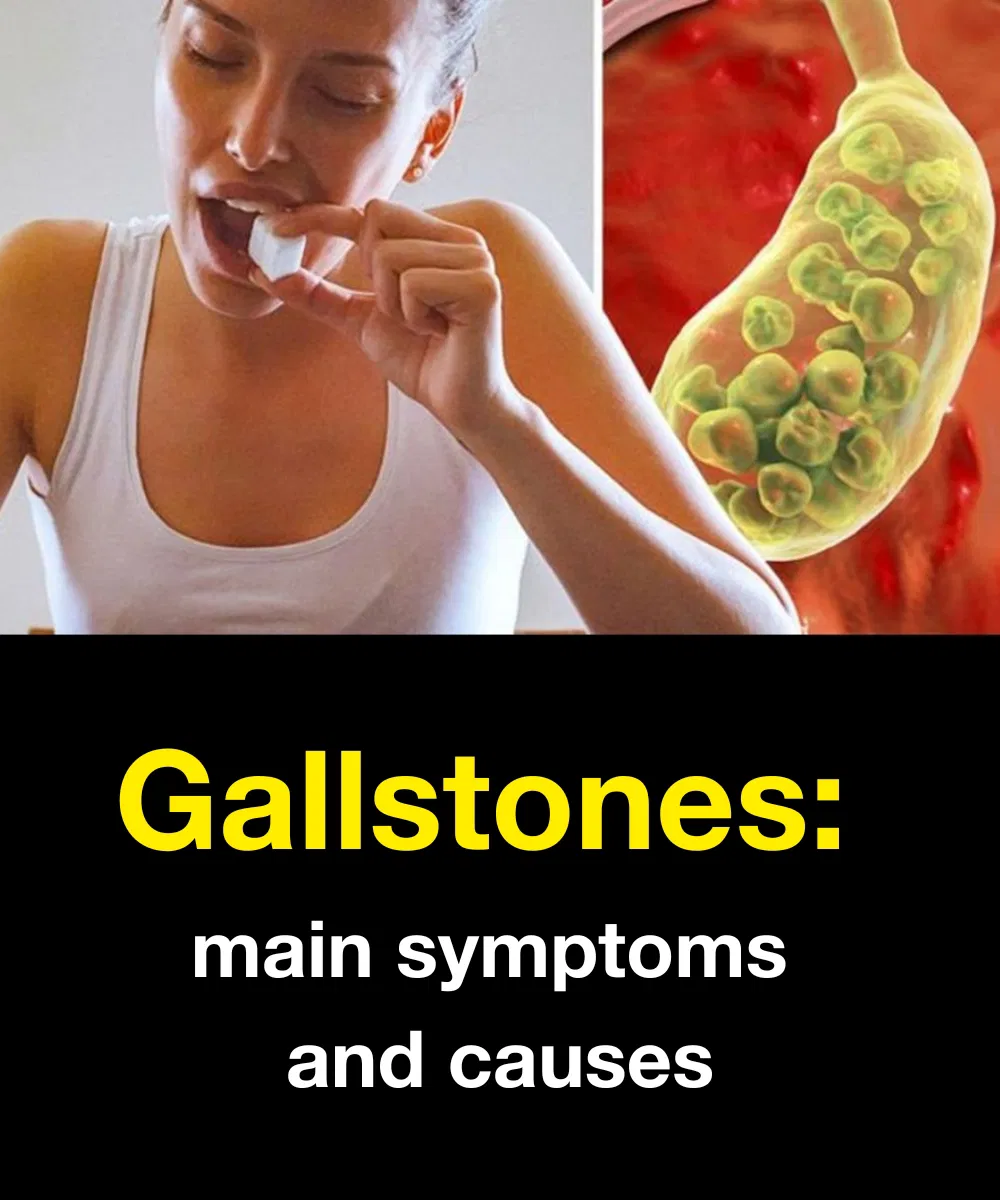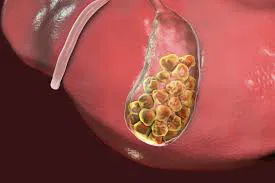Gallstones: what they are, symptoms, causes and treatment

Gallstones, also considered as gallstones, are small solid formations that form inside the gallbladder. They vary in size, from tiny grains of sand to larger stones that cause pain.
These stones do not always cause problems, but when they block the bile ducts, the pain shows suddenly and can be quite intense, joined by other annoying symptoms.
This problem affects women more, especially those with specific risk factors, such as a diet high in fats and a sedentary lifestyle. Therefore, it is crucial to understand the causes, symptoms and treatment options to avoid complications.
What are gallstones?

Gallstones are solid formations that frow in the gallbladder — a small organ located below the liver, responsible for storing bile, a liquid that helps in the digestion of fats.
According to the Cleveland Clinic, these stones are usually composed of cholesterol or bilirubin. Most of the time, they don’t cause symptoms, but if they block the bile duct, they can cause terrible pain and inflammation (cholelithiasis), which requires medical treatment.
There are two main types of gallstones: cholesterol gallstones, which are more popular, and pigmented gallstones, which happens due to excess bilirubin. Both can block the flow of bile and cause pain.
Symptoms of gallstones
According to the Mayo Clinic, symptoms vary relying on the severity and location of the stone. The most popular signs include:
-Severe pain in the upper right abdomen
-Pain in the center of the abdomen, below the breastbone
-Back pain between the shoulder blades
-Right shoulder pain
-Nausea and vomiting.
These symptoms show suddenly and can last from a few minutes to several hours. In severe cases, the stones cause complications such as infection and inflammation, requiring urgent medical attention.
Causes of Gallbladder Stones

Gallstones build when there is an inequality in the composition of bile. According to the BVSMS portal, the main risk reasons include:
-High-fat, low-fiber diet
-Sedentary lifestyle and high LDL cholesterol
-Diabetes and obesity
-High bl00d pressure
-Smoking
-Prolonged use of contraceptives
-Elevated estrogen levels, common in women
-Genetic predisposition.
-Adopting a balanced diet and maintaining an exercise routine are measures that help reduce the risk.
Gallstone Treatments
Treatment depends on the severity of symptoms. According to the Cleveland Clinic, when bile ducts are blocked, surgery to delete the gallbladder (cholecystectomy) is the most effective approach.
For those who cannot or do not wish to undergo surgery, there are different options, such as medications to soften the stones or minimally invasive procedures, although these do not always remove all the stones.
When to see a doctor
Look for immediate medical attention if you notice severe abdominal pain, especially if accompanied by nausea or vomiting. If symptoms persist or worsen, there may be a blockage in the bile duct, seeking urgent intervention. In addition, fever and chills imply a possible infection, requiring prompt medical evaluation.

Prevention
To reduce your risk of gallstones, adopt healthy habits, such as:
-Keep a balanced, fiber-rich diet
-Practice physical activities regularly
-Avoid excessive weight gain
-No smoking
Undergo medical monitoring to monitor risk factors.If you feel that something is wrong, visit a doctor. Don’t hesitate to look for help when you need it. Looking after your health is crucial to maintain your well-being.
Gallstones represent a common but often underestimated health issue that can significantly impact the quality of life if left untreated. Understanding what gallstones are, their symptoms, causes, and available treatment options is essential for early detection and effective management. These solid formations develop in the gallbladder due to imbalances in bile composition, and although many individuals live without symptoms, complications arise when gallstones obstruct bile flow. This obstruction causes sudden and severe pain and can lead to inflammation, infection, or other serious conditions requiring urgent medical intervention.
Women tend to be more affected by gallstones, particularly those with specific risk factors such as a diet rich in fats, sedentary lifestyle, obesity, or elevated estrogen levels. Genetics also plays a role, further emphasizing the need for personalized healthcare approaches. Prevention remains the best strategy, which can be achieved by adopting a balanced diet rich in fiber, maintaining an active lifestyle, avoiding smoking, and managing underlying health conditions like diabetes or high cholesterol. Early recognition of symptoms such as sharp abdominal pain, nausea, or back pain can help seek timely medical advice and avoid complications.
Treatment depends largely on the severity of symptoms and whether the bile ducts are obstructed. Surgery to remove the gallbladder remains the most effective solution when blockages occur. However, for patients unable or unwilling to undergo surgery, alternative medical treatments and minimally invasive procedures are available, albeit with varying degrees of success. Post-treatment care and lifestyle modifications play a vital role in reducing the risk of recurrence.
Gallstones not only cause physical discomfort but can also lead to emotional distress due to pain and uncertainty about one’s health. Therefore, comprehensive healthcare should include not just medical intervention but also patient education about symptoms, risk factors, and lifestyle changes. Encouraging regular medical checkups and open communication between patients and healthcare providers ensures better outcomes.
In conclusion, gallstones are a manageable health condition when approached proactively. Public awareness about their causes, symptoms, and treatments is vital for reducing the burden of complications. Maintaining a healthy lifestyle, recognizing early warning signs, and seeking prompt medical care are key steps toward a better quality of life. As medical science advances, new treatment methods may provide even less invasive and more effective options. Until then, knowledge and prevention remain our strongest tools in combating gallstones and preserving long-term health.
